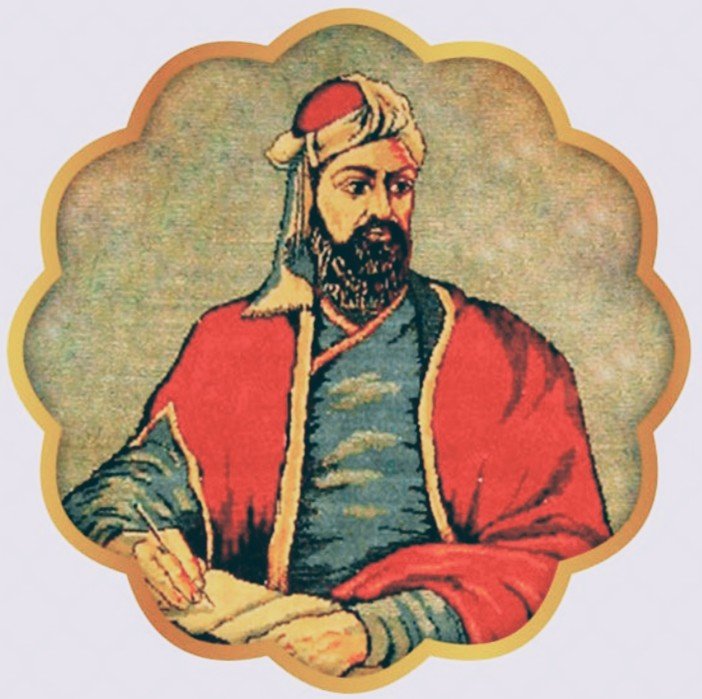Hakim Nizami, One of Iran’s Great Poet and Novelist
In the blossoming world of literature, arts, and culture, the poet and novelist community remembers one of the ancient literature guru, Hakim Nizami, the great Persian poet and novelist, who was born in the 6th century, known in the vails of romantic literature with different names, "Ilyas," "Kaniya,” and Abu Muhammad.

In the blossoming world of literature, arts, and culture, the poet and novelist community remembers one of the ancient literature guru, Hakim Nizami, the great Persian poet and novelist, who was born in the 6th century, known in the vails of romantic literature with different names, "Ilyas," "Kaniya,” and “Abu Muhammad.”. According to some cultures, he was called “Nizamuddin” or "Jamaluddin.”. The great man is considered a great spiritual, miraculous, and messianic personality by lovers of literature, arts, and culture. Historians differ on his date of birth and death, but his poems show that he was born in 530 AD and died in 614 AD. The reason for Nizami’s fame in Persian is the creation of "Mukhmas.”.
He got education in the many subjects of his time and was well versed in many sciences of his time. Due to his skill and extensive knowledge, has given him the title of “Hakim Nizami”. The most important feature of his poetic style is his innovation. His poetry style and his contemporaries’ poetry style is considered between Khorasani and Iraqi style. If we divide Persian poetry into three styles or schools (Khorasani, Iraqi, Indian), it can be concluded that the characteristics of the Iraqi school are more prominent in their style of expression.
Nizami was one of the famous poets who presented ordinary life imagination of the people in his poems and reflected the complete morals and habits of the people of his time. His poetry represents dynamic natural elements that constructed a society’s mixture of good and evil, ugliness and beauty among humans. In designing his ideas, he has tried to describe the social events and habits as well as the common flaws and ugliness of his time in a simple, easy, understandable and comprehensible way for the common people. Hakim Nizami became a brilliant and capable poet, well-known patriot and follower of the great Persian poet and author known to the world as “Fredowsi”-( Abu l-Qasim Ferdowsi Tusi c.940-1020) After Ferdowsi, Nizami rearranged his fifth “Masnavi” collection under the name of “Iskandernama”, which is in fact a continuation of Ferdowsi’s work.
Over folding centuries, his scripts about the sacred name of the homeland (Iran) still exist and are like a shining essence in his precious and immortal writings. His first collection, “Makhzan-ul-Israr”, contains 2260 poems. Miraculously he wrote his first collection few days before his 40th birthday and it is one of the most famous poetry collections in Persian language, which includes twenty articles on sermons and wisdom.
His most significant poetic work was the “Panjganj” (five reservoirs) or “Khamsa” (five collections), which contains about 20,000 verses. It consisted of Makhzan-al-Asrar (reservoir of secrets), Laili and Majnoon, Khosrow and Shirin, Haft Pekar (seven figures), and Iskandarnameh (description of Alexander), written in Iraqi poetic style.
Similar to Ferdowsi and Saadi, Nizami was one of those poets who, was gifted in creating and following a special literary poetic style and method. Although storytelling in the Persian language did not originate from, Hakim Nizami, yet he was the only poet who took allegorical poetry to the highest level, he who could select the right words and phrases and combined them in a special way that produced, aesthetically beautiful meanings and themes in Persian poetry. While when it came to creatively describing people, places, and things with precision and detail while utilizing fresh, enjoyable metaphors and similes, he was unmatched by the end of 6th century AH.
Hence his second collection is called “Khosrou” and “Shirin”, which was completed in 576 AD and contains 6500 poems of “Atabak Shams-ud-Din Muhammad”, which he presented for a wrestler known as “Ibn Eldugz”. His third, poetry collection was “Laila” and “Majnoon”, written in the year 584 AD, containing 4700 poems. It was compiled in the name of “Sherwanshahd Abul Muzaffar Akhtan bin Manuchehr”. Another collection was “Bahram Nama” or “Haft Gnmbad” in which the poet has named “Aluddin Kirp Arsalan”, King of “Maragha”. This collection contained 5136 poems and had written about the story of “Bahram Gore”, one of the most famous Sassanid stories.
The last collection was “Iskander Namah”, which consisted of two parts: “Sharaf Namah” and “Iqbal Namah”. This collection was named “Atabak Azam Nasruddin Abu Bakr Ibn Muhammad Jahan Pahlawan” which consisted of 10,500 poems. In addition to “Khumsa”, he has also compiled a “Diwan” of about 20,000 poems, which’s only a few poems are currently available. However, being born from a wealthy family, the Poet has ample in learning the Holy Qur’an and religious education, as well as in seeking the intellectual and narrative information of his time.
Although Nizami’s works can be criticized in terms of lengthy topics, playing with words, using scientific and philosophical terms, many Arabic combinations, and the complexity of the meanings of some verses, the unique art mastery in composing moments of happiness, and romanticism, uplifted him to be one of the greatest poets of Iran and the Persian language. Thus, every year in Iran, in March, great gatherings by famous poets celebrate the life of a great Iranian poet, Hakim Nizami, all over the world.
